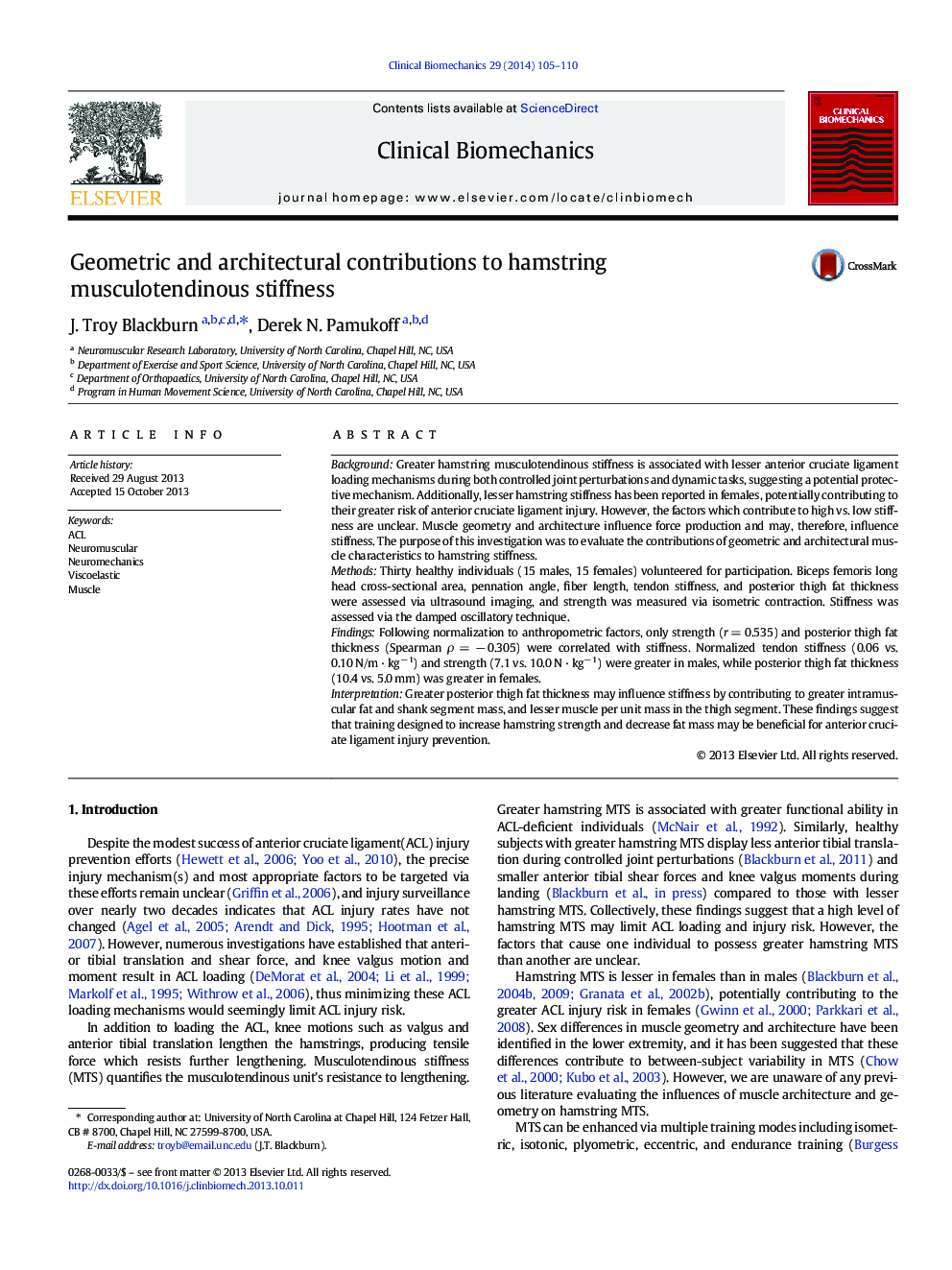| کد مقاله | کد نشریه | سال انتشار | مقاله انگلیسی | نسخه تمام متن |
|---|---|---|---|---|
| 4050420 | 1264928 | 2014 | 6 صفحه PDF | دانلود رایگان |
BackgroundGreater hamstring musculotendinous stiffness is associated with lesser anterior cruciate ligament loading mechanisms during both controlled joint perturbations and dynamic tasks, suggesting a potential protective mechanism. Additionally, lesser hamstring stiffness has been reported in females, potentially contributing to their greater risk of anterior cruciate ligament injury. However, the factors which contribute to high vs. low stiffness are unclear. Muscle geometry and architecture influence force production and may, therefore, influence stiffness. The purpose of this investigation was to evaluate the contributions of geometric and architectural muscle characteristics to hamstring stiffness.MethodsThirty healthy individuals (15 males, 15 females) volunteered for participation. Biceps femoris long head cross-sectional area, pennation angle, fiber length, tendon stiffness, and posterior thigh fat thickness were assessed via ultrasound imaging, and strength was measured via isometric contraction. Stiffness was assessed via the damped oscillatory technique.FindingsFollowing normalization to anthropometric factors, only strength (r = 0.535) and posterior thigh fat thickness (Spearman ρ = − 0.305) were correlated with stiffness. Normalized tendon stiffness (0.06 vs. 0.10 N/m · kg− 1) and strength (7.1 vs. 10.0 N · kg− 1) were greater in males, while posterior thigh fat thickness (10.4 vs. 5.0 mm) was greater in females.InterpretationGreater posterior thigh fat thickness may influence stiffness by contributing to greater intramuscular fat and shank segment mass, and lesser muscle per unit mass in the thigh segment. These findings suggest that training designed to increase hamstring strength and decrease fat mass may be beneficial for anterior cruciate ligament injury prevention.
Journal: Clinical Biomechanics - Volume 29, Issue 1, January 2014, Pages 105–110
